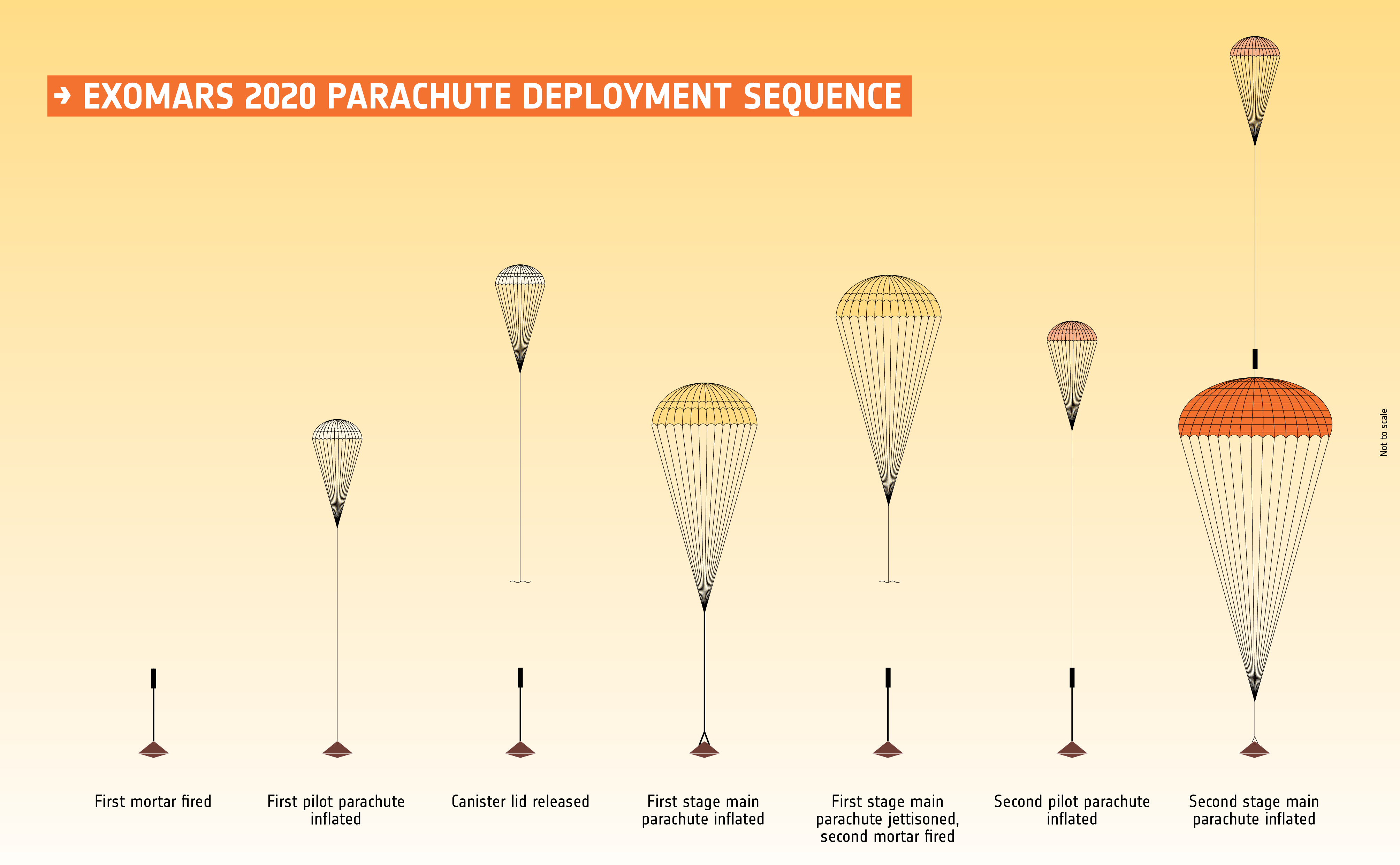
In October 2016, Europe's small Schiaparelli lander entered the Martian atmosphere and attempted to touch down on the surface of the red planet. Due to an altitude measurement error, however, the lander's parachute system was released early, and the lander crashed into Mars.
When it comes to Mars, this was just another in a long line of failures. Of the 21 landers sent by humans to Mars over the last six decades, only eight have successfully reached the red planet's surface and conducted science operations—all of which were built and launched by NASA.
Now, the European Space Agency is trying again, with its ExoMars mission due to be launched on a Proton rocket next summer. According to the space agency, the European-built Rosalind Franklin rover and the Russian-led surface platform, Kazachok, are nearly complete. They are due to go down to the Martian surface in a descent module. This spacecraft has a rather complicated sequence of parachute releases to slow the lander's descent through the thin Martian atmosphere.

The first pilot parachute and the 15-meter main parachute are deployed while the lander is still traveling at supersonic speeds. The second set of pilot and main parachutes, which are larger, are deployed at subsonic speeds. This all happens rather quickly, as the entire landing sequence, from entering the Martian atmosphere, to touching down on the planet's surface, takes just six minutes.
Lots of test anomalies
The testing program has not gone particularly well. In May, damage occurred to both main parachute canopies during a high altitude drop test from 29km. After assessing the problem and making changes to the design of the parachutes and their bags, the agency conducted another high-altitude test on August 5th, this time focusing solely on the larger canopy that deploys in the lower atmosphere. This test, too, was not successful.
Despite these failures, European officials have publicly said they are pressing ahead toward a 2020 launch of the mission. “It is disappointing that the precautionary design adaptations introduced following the anomalies of the last test have not helped us to pass the second test successfully, but as always we remain focused and are working to understand and correct the flaw in order to launch next year," said Francois Spoto, ESA’s ExoMars Team Leader, in a news release.
The problems with the parachutes may be worse than has publicly been reported, however. Ars has learned of at least one other parachute failure during testing of the ExoMars lander. Moreover, the agency has yet to conduct even a single successful test of the parachute canopy that is supposed to deploy at supersonic speeds, higher in the Martian atmosphere.
Efforts to obtain a comment from the European Space Agency about this information, or the likelihood of a slip past present 2020 launch date, were unsuccessful. After a spokeswoman with the European Space Agency offered to look into the matter on September, 4, there has been no further response.
reader comments
137